6. The Man Who Knew Too Much
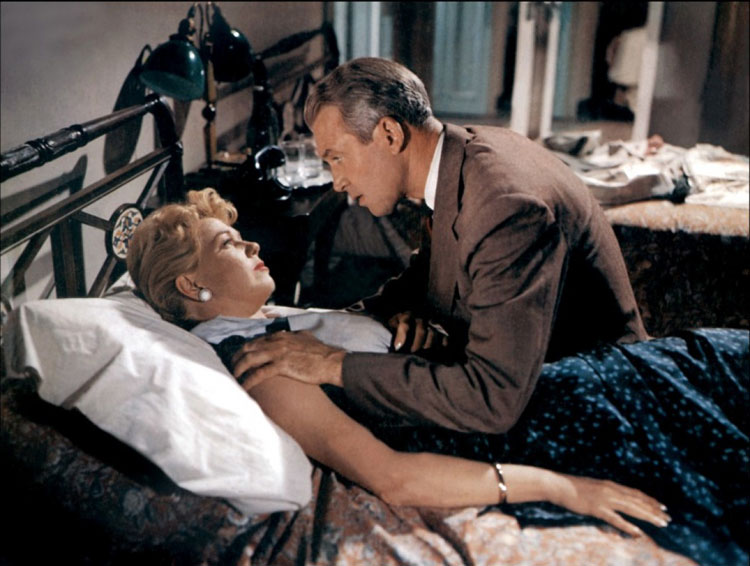
A remake of one of his least successful films from his pre-Hollywood days, this American re-creation is not simply an improvement that builds on the strengths of the original, it somehow manages to feel like nothing short of a revelation, and in turn, it gives us one of the finest examples of what defines Hitchcockian cinema.
In truth, this version doesn’t deviate very far from the original, at least in terms of thematical content, but rather the updated iteration carries improvements in its formal structure that elevate it to new heights. The languid, more humorous opening serving as a perfect counterpoint to the rapidly elevating level of suspense that works itself up into a crescendo as the orchestra perform at the Royal Albert Hall, where the film’s assassination attempt takes place, a cymbal crash intended to hide the roar of a solitary gunshot.
You could possibly argue that Hitch hammed up the trepidation here, but it is rather interesting in that it almost draws a parallel with Rear Window, in that, James Stewart’s biggest enemy was literally space, the distance between his apartment and the scene of the crime, but here, time has taken its place. In both films, it is his partner that resolves to conquer both, though with differing levels of success.
Doris Day is almost frozen solid with fear as she stumbles around the venue of the assassination attempt as the clock counts down and the pressure builds up. She wrestles with the notion that averting the murder might prevent her being reunited with her missing child and only relents at the last moment when she releases her frustration in a shrill scream. Her success in thwarting the killing is unlikely, yet the relief is tangible for both her and the audience, but it is not the only superb use of sound within the picture.
The endings to both versions of the film are very familiar in that our female protagonist utilises her skills, the basis of her previous career, to bring an end to the kidnapping. In the original, she was an expert marksman, here, a singer, which leads to a performance in the embassy where her son was being held, and ultimately, to the reunification of the familial unit.
After the plot to assassinate the Prime Minister has been stopped, the McKenna’s head to the aforementioned embassy where a reception is being held, the guests request that she sing, and so she performs “Que Sera, Sera”. The choice of song is not accidental, it is repeated from earlier in the film where she is heard singing it to her son, she repeats it in the hope of finding him there.
The song triggers another excellent example of parallel cutting as the camera first cuts a path through the building and upstairs to the room where the young boy is being held. He then begins to whistle along with the music before James Stewart sets off to find him as his wife continues to sing.
5. The Birds
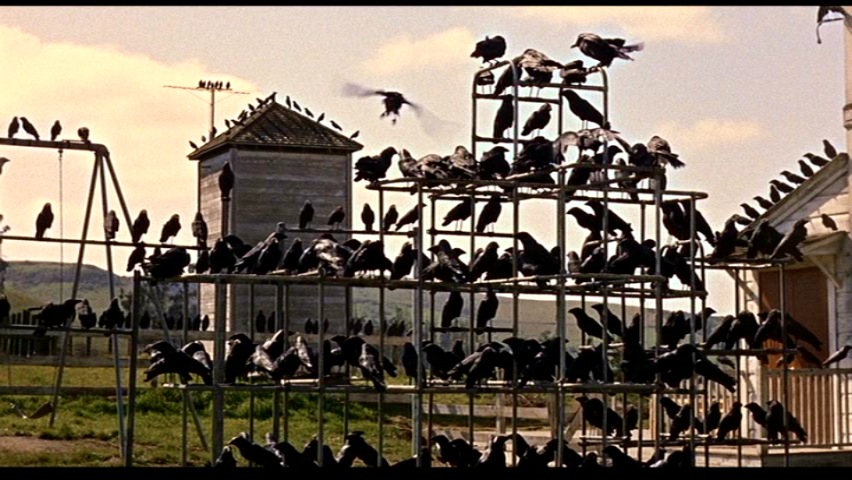
Birds might have played a key role as symbols to flesh out the characters and setting of Psycho, but for his next picture they would become the basis of the entire project. In one regard it is a reaction to Psycho where the only developed protagonist was killed off before the half-way mark, here Hitch’s heroine grows and becomes more endearing to both the other characters as well as the viewer over the course of the film.
This character development ultimately wins her the man she loves, Mitch, as well as approval from his mother, the beauty of it being that the romantic sub-plot moves along at the same pace as the main one, concluding just prior to the less settled finale where they all drive away into the distance together, still none the wiser about what started the attacks in the first place.
It’s interesting that the film starts off as some sort of romantic comedy with Melanie’s (Tippi Hedren) first encounter with Mitch, and her subsequent invite out to his family’s Bodega Bay homestead, away from the hubbub of her native San Fancisco (with a pair of lovebirds in tow to deliver there). To surprise him she takes a boat out to the house, at this point Hitch gives us a subjective view with shot/reverse shot cutting to show us Melanie on the boat and then Mitch awaiting her arrival on the dock.
It is here that the director completely changes direction and we are shown objective shots of a seagull in flight, before and after it swoops down to attack our heroine. In doing so, Hitchcock was really laying the foundations, and ultimately, created the template for the disaster film that would go on to find enormous success little over a decade later with the Charlton Heston vehicle, Earthquake.
Such success, however, would elude The Birds, despite its respected place among Hitch’s oeuvre, for one – despite featuring Jessica Tandy and a very young Veronica Cartwright – The Birds lacked any real star power, a far cry from the major disaster films of the 1970’s, such as The Poseidon Adventure and The Towering Inferno. Another presumed reason for its relatively unsuccessful box office earnings is that the titular attackers do so in such short bursts, though perhaps the inconclusive ending is another.
Of course, the ambiguity is intentional, Hitchcock knows that if there is a definite source for the on-screen fear, the audience can steel themselves against it, but if it is left open, then the root cause of the incident can be something different for everybody who sees it, and that is surely the most terrifying thing of all. Stephen King said it best when he claimed that “Nightmares exist outside of logic, and there’s little fun to be had in explanations; they’re antithetical to the poetry of fear”.
4. Psycho
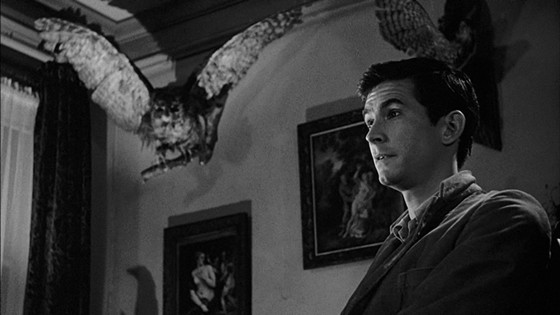
Hitch had noticed a trend in Hollywood where critically panned, cheaply made horror films were turning in massive profits, which set his mind to work wondering what a master film maker such as himself could achieve with an independently funded foray into the genre. In a sense, Psycho carries over from where Vertigo left off, once again, we see the film’s female lead killed off roughly midway through the film, at which point the real story kicks off.
In typical Hitch fashion, guilt plays a major role, with the character of Marion Crane (Janet Leigh) making off with $40,000 of her employer’s money, only to be caught up in a torrential downpour and stop for the night at the Bates Motel. During this time, her guilt has been slowly consuming her, and after she talks with Norman (Anthony Perkins) she endeavours to return the money the following day. Of course, as we all know, she isn’t given the opportunity to do so as she is instead murdered by a shadowy figure that resembles Norman’s mother.
The infamous shower scene where Marion meets her demise crams in a whopping seventy different shots into just forty-five seconds of screen time, creating one of the most brutal and visceral sequences ever committed to celluloid. Here, the director utilises a variety of close-up shots with only a few medium angles of the room to prevent the audience having any chance of escape, it also has the dual purpose of making the relatively short segment appear to last even longer. The opening and closing sections play out at a sedate pace, which serves to enhance the fast paced, frenzied nature of the attack, making it even more shocking.
There’s a magnificent shot early in the film that sees Marion and her lover Sam (John Gavis) standing beside a window, the shadows of the slats in the blinds casting horizontal bars across her face indicating that she is trapped – the money, as she sees it, her escape route. Additionally, given the positioning of the shadows, it can also be interpreted as a representation of a bird cage, thereby making it a forewarning of what is to come in what is arguably the film’s most important scene.
Birds, you see, play a very important role in Psycho, in fact it’s possible to read a good deal into it based on shot types (bird’s eye views), character names and whatnot. But it’s in the room where Marion and Norman have their talk where the theme comes to life, with the mise-en-scène filled with stuffed birds whose presence Norman justifies with his interest in taxidermy.
This alone surely tells us that Crane is set to join their number, the shroud of death hanging over her further highlighted by the shot of a dead crow hovering just over her shoulder. As a final note, in the same room, there’s a shot of Norman placed between two different birds to draw attention to his dual personality; the meek turkey and the more aggressive bird of prey, the owl.
3. Rear Window
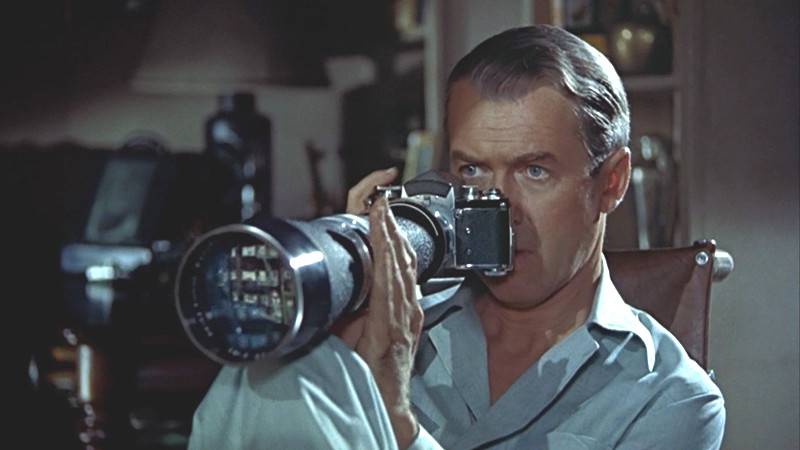
It’s predecessor, Dial M for Murder, was very much delivered in a theatrical style, with the whole film being almost exclusively performed within the confines of a solitary room. Hitch professed to Francois Truffaut that there was little more to it than him just going through the motions, and whilst we can surely dismiss the director’s own comments based on the quality of the film, we can also see that the theatrical elements that defined it also make it a hugely important point in the development of this much-loved thriller.
Here, James Stewart’s character is confined to a single room having broken a leg during his work as a photojournalist, and we join him not long before his cast is set to be removed. The boredom, and borderline isolation, are beginning to take their toll, driving him stir crazy, and he has taken to spying on his neighbours as a means of combatting this.
As a result, on one long and lonely evening, he believes he witnesses a murder carried out by a man that lives across the courtyard from him, Lars. He calls in a favour to get a police search of the apartment which turns up no evidence to support his theory, leaving it up to Jeffries (Stewart) and his glitzy girlfriend, Lisa (Grace Kelly), to uncover the truth.
The relationship between Jeffries and Lisa is quite an interesting one, at first it is strained somewhat by her desire to marry him, something that he is reluctant to do as he sees their two places within the social stratum as being utterly irreconcilable. Over the course of their investigation, however, as she becomes intrigued and hands-on with it – eventually risking her life to procure the evidence that they need – Jeffries realises that his assumption was incorrect and the two ultimately fall helplessly in love. The romantic tension once more resolving in-line with the main narrative.
In Plato’s The Republic, Glaucon argues against justice and morality, claiming them to be little more than stumbling blocks in the way of self-interest (though he concedes that society couldn’t function without such compromises), and that without the constraints that society places upon us, the unjust would inevitably prevail over the just – at least financially anyway.
Rear Window takes place in what seems like a snapshot, a section of a city far removed from the rest of the world where these constraints no longer apply. The murderous neighbour rids himself of his wife and is set to benefit from this when her life insurance pays out, an inevitability given that the law, when called in to investigate, can make no headway in establishing a case against him.
Now, without going as far as saying that Jeffries is a true representation of goodness, but when Lars confronts him at the end of the film, he demands to know what his voyeuristic neighbour wants, expecting the man to try to blackmail him. This, he does not do.
Hitch uses the setting to highlight the cravings of his audience for violence, as we wait with baited breath as Jeffries likewise patiently observes the apartment across the courtyard for vindication of his presumptions about his neighbour. This is effectively delivered when we see another recurring Hitchcock motif; the death of innocence.
Here, innocence is a dog, an unwitting witness to the heinous crime whose untimely demise is greeted with the horrific shriek of its owner, immediately sending all but one apartment springing to life out of morbid curiosity. Within the solitary, ominous apartment, we see the glowing end of a cigarette as the man watches, he does not need to discover the source of the disturbance for he is all-too ware, and in this, his guilt is all but effectively confirmed.
2. Vertigo

Based on the novel D’entre le Morts which was written by Pierre Boileau and Thomas Nacejac, the same duo behind Les Diabolique – a novel that Hitch almost acquired the rights for, Vertigo might very well be the most accomplished film that Hitch ever made. And it might also be a strong homage to one of his most profound influences.
Fritz Lang’s Der müde Tod concerns itself with a woman whose lover has died and enters the Kingdom of Death to have his life restored, only to then have to relive her loss a further two times. Here, Hitch’s protagonist, Scotty, must also bear witness to the deaths of three interconnected women; Carlotta, Madeleine and Judy.
James Stewart plays a burnt out ex-cop who is hired by the sleazy Gavin Elster (Tom Helmore), an old school friend of his, to follow his wife Madeleine – a woman who believes herself to be the reincarnation of Carlotta Valdez, a woman who was used and discarded by a man before killing herself.
As he follows her around, Scotty (Stewart) begins to fall in love with her from afar, this is completed when he saves her from committing suicide, after which the two make love. Her stay of execution is short lived, however, as she soon makes her way up a bell tower, where Scotty’s vertigo will not allow him to follow, and she leaps to her death. The incident causes Scotty to suffer a breakdown and retreat from the world.
Upon his return to everyday life he encounters his dead love’s spitting image (Judy) whom he pursues and changes her into Madeleine. At length, he discovers that Judy and his lost lover are in fact the same person, and that he was just a pawn in an elaborate scheme to murder Gavin’s real wife. In the end, Scotty overcomes his vertigo (a metaphor for his fear of commitment) and drags Judy back to the top of the bell tower where the two briefly reconcile before she recoils from a shadow (believing it to be the ghost of the real Madeleine) and falls to her death.
After Judy emerges out of the bathroom, her hair dyed to complete her transformation back into Madeleine, she is bathed in the glow of a green neon light, with the colour having significance in the film, it shows up repeatedly and ties in well with the scene in which Scotty and Madeleine visit the sequoia sempervirens (cypress trees). Sempervirens translates from Latin as “always green”, and in this sequence the two characters admire a cross-section of one where key dates are marked to show history repeating itself.
Both Vertigo and Rear Window alike (and Marnie for that matter) connect thematically with a focus on fetishism and voyeurism, guilt and confession. In Rear Window Jeffries only truly wanted Lisa after seeing her break into Lars’ house, putting her life at risk. Here, Scotty falls in love with a woman that he has only watched from afar, before finding Judy and using her subservience, driven by her guilt over what she has done, to remodel her as Madeleine.
In doing so, he eventually breaks her down enough to unearth a confession. It’s most interesting because what we see is the model Hitchcock antagonist turned on its head to become the hero; a man who appears to be a respectable, upstanding member of society, yet is secretly driven by his dark sexual fetishes.
1. North by Northwest
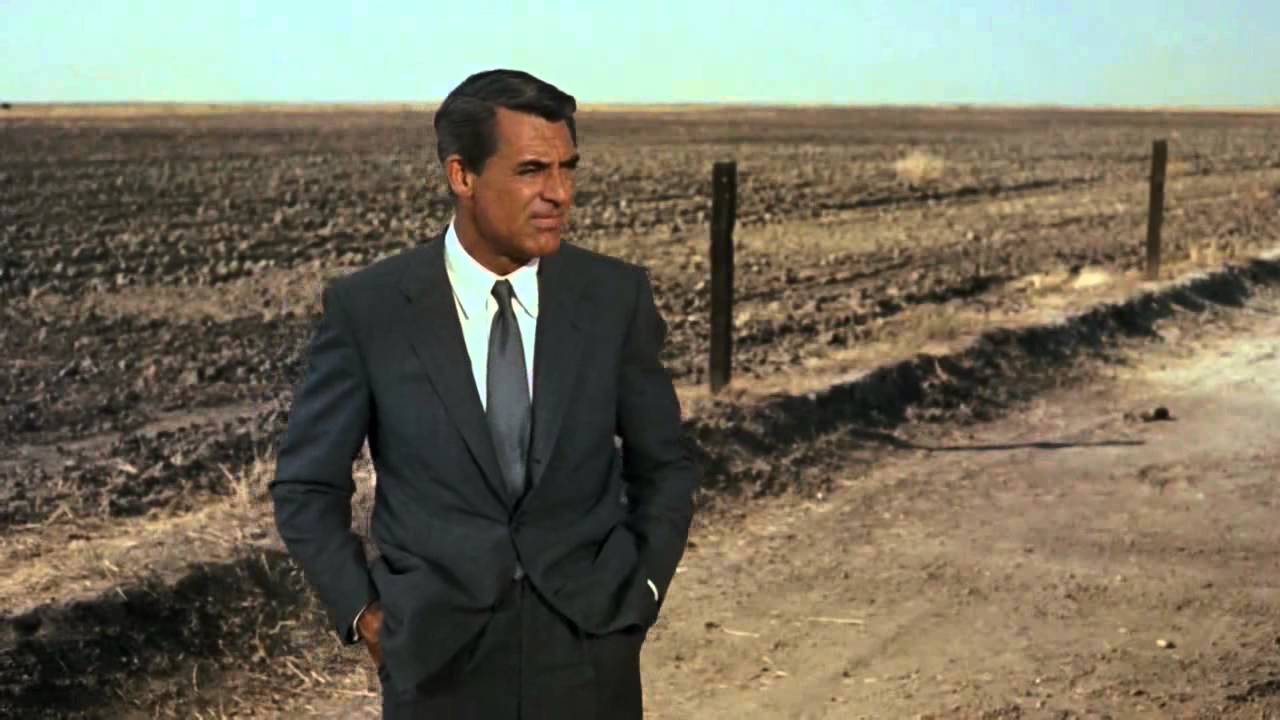
This action-packed spy romp was apparently imagined by Hitch as he was working on Vertigo, it was to be a light, enjoyable film devoid of the emphasis on symbolism, but there is some carry over from it. Well, at least insofar as Cary Grant’s Roger and Eva Saint Marie’s Eve are the lovers that cannot be kept apart, even by betrayal.
This flick was made for MGM – the home of the musical at the time – which might go some way to explain why there’s a subtle feel of a certain Shakespearean play about it, except that here, the lovers forego their poison induced passing and instead enjoy the happy ending that the director had earlier denied Scotty and Judy in his previous effort.
The story is classic Hitchcock territory with Grant playing Roger Thornhill, a man mistakenly believed to be a man named George Kaplan, who finds himself pursued by James Mason’s villainous Phillip Vandamm and his cohorts across the U.S.A. As it turns out, Kaplan doesn’t exist, he is just a decoy to throw Vandamm and his organisation off of the trail of the real F.B.I. agent that has infiltrated their number.
Thornhill must then, in Hitchcockian style, clear his name and pursue the real villain of the piece, surviving all manner of stylish set-pieces as attempts are made on his life. As one might expect, there’s even a classic MacGuffin thrown in for good measure too, a microfilm containing government secrets hidden with a small statue, though ultimately it all leads to a thrilling finale high up on Mount Rushmore.
This is all backed up with a love story of sorts. Thornhill chases the beautiful, though clearly quite dangerous Eve Kendall, a woman who might just be the most ice-cold of all of Hitch’s femme fatales. She shoots her admirer in front of Vandamm to maintain appearances (in her defence, her gun was filled with blanks) and has no qualms about sending him off to potentially meet with his death in the middle of nowhere – the film’s rightly lauded crop duster chase sequence.
Part of the beauty of North by Northwest is that it manages to transcend logic, Cary Grant never feels genuinely safe at any point, particularly during the film’s chase scenes, even though no harm was ever likely to befall our hero, and this is surely testament to Hitch’s ability to craft a spectacular thriller.
North by Northwest is rightly seen as being the template for the James Bond films, light hearted jaunts across stunning locations with a well-dressed, quick witted hero and his charming opposing number. More than this though, it is, even after more than fifty years, a sublime collusion of talent, from the acting prowess of Grant, Martin Landau, James Mason and Eve Saint Marie, to the screenwriter Ernest Lehman and so on. Even Saul Bass’ opening credits still seem so far ahead of their time. It is, as Lehman set out to create, the Hitchcock movie to end all Hitchcock movies.